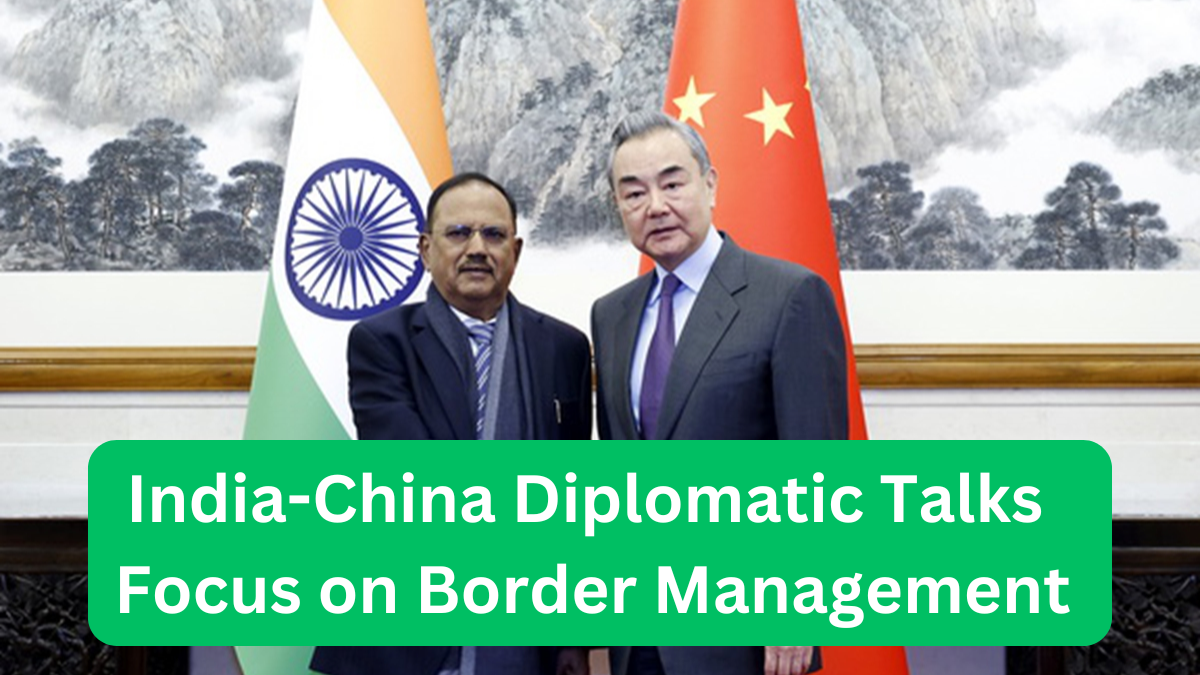India and China engaged in a fresh round of diplomatic talks in Beijing on Tuesday, aiming to strengthen border management and reignite cross-border cooperation. This meeting brought key focus to trans-border rivers and the sacred Kailash-Mansarovar Yatra, two critical areas of collaboration between the two nations.

Key Highlights of the Meeting
The diplomatic discussions took place within the framework of the Working Mechanism for Consultation and Coordination (WMCC). This was an essential dialogue platform where both countries explored a way forward in enhancing their bilateral relations, specifically in the context of managing the border situation.
-
Focus Areas of the Talks:
-
Border Management: Both countries aimed to discuss better management strategies for the Line of Actual Control (LAC).
-
Trans-Border Rivers: The talks also explored the revival of cooperation concerning shared river systems.
-
Kailash-Mansarovar Yatra: The importance of facilitating the Yatra was a focal point for both parties.
-
The Road to Peace and Progress
The meeting in Beijing was a direct follow-up to decisions made during the December talks between National Security Advisor (NSA) Ajit Doval and Chinese Foreign Minister Wang Yi at the Special Representatives (SR) dialogue.
The Ministry of External Affairs (MEA) confirmed that both India and China agreed to take substantial steps in preparing for the next SR meeting, which will be held in India later this year.
-
Diplomatic Atmosphere:
-
The meeting was described as being held in a “positive and constructive” atmosphere, fostering a spirit of cooperation.
-
Both countries comprehensively reviewed the current situation along the LAC and discussed ways to advance effective border management.
-
-
Importance of Peace on the Border:
-
The MEA reiterated that maintaining peace and tranquillity along the border is essential for the smooth development of overall bilateral relations between India and China.
-
Current Border Situation
As part of the discussions, both sides reviewed the situation along the LAC, particularly in the region of eastern Ladakh. Reports suggest that each side currently has around 50,000 to 60,000 troops stationed along the border in this region.
Overview of the India-China Military Presence
| Region | Indian Troops | Chinese Troops |
|---|---|---|
| Eastern Ladakh | 50,000–60,000 | 50,000–60,000 |
Doval’s Beijing Visit: Key Takeaways
National Security Advisor (NSA) Ajit Doval’s visit to Beijing in December 2024 was a pivotal moment in re-engaging the SR mechanism and other dialogue formats. These dialogues were reinvigorated following the meeting between Prime Minister Narendra Modi and President Xi Jinping in Kazan on October 23, 2024.
Key Developments from the December Talks:
-
Revival of SR Mechanism: The SR dialogue was officially revived, with both sides agreeing to work toward a lasting solution to the boundary issue.
-
Positive Outcomes: The talks focused on strengthening border management mechanisms, with emphasis on military and diplomatic channels.
Preparing for the Next SR Meeting
The next SR meeting is slated to be held in India later this year, and both India and China are taking steps to ensure comprehensive preparations for the discussions. The two countries are working together to ensure that the outcomes from the previous talks are fully implemented.
Cross-Border Cooperation: A Step Forward
The talks also involved discussions on the early resumption of cross-border cooperation, particularly in the areas of trans-border rivers and the Kailash-Mansarovar Yatra.
-
Resumption of Cross-Border Cooperation:
-
Both India and China expressed a desire to restart cooperation, with a focus on shared resources like rivers.
-
The Kailash-Mansarovar Yatra, an important spiritual pilgrimage, is also a point of mutual interest for the two nations.
-
Diplomatic Delegations
-
India’s Delegation:
-
Led by Gourangalal Das, Joint Secretary (East Asia) in the MEA, who was at the forefront of the discussions.
-
-
China’s Delegation:
-
Headed by Hong Liang, Director General of the Boundary and Oceanic Affairs Department of the Chinese Ministry of Foreign Affairs.
-
-
Key Meetings:
-
Das also held meetings with Hong Lei, China’s Assistant Foreign Minister, underscoring the diplomatic exchange between the two nations.
-
What’s Next?
The WMCC meeting, which occurred two months after Foreign Secretary Vikram Misri’s visit to Beijing, marks a renewed focus on the bilateral relationship. With a commitment to peace along the LAC, both India and China are gearing up for the future SR meeting in India.
FAQs
1. What is the WMCC meeting?
The Working Mechanism for Consultation and Coordination (WMCC) is a diplomatic platform where India and China discuss issues related to border management and other bilateral matters.
2. When is the next SR meeting between India and China?
The next Special Representatives (SR) meeting will be held in India later this year, focusing on furthering peace and resolving the boundary question.
3. How many troops are stationed at the India-China border?
Currently, both India and China have around 50,000 to 60,000 troops stationed along the LAC, particularly in eastern Ladakh.
4. What is the significance of the Kailash-Mansarovar Yatra in the talks?
The Kailash-Mansarovar Yatra is a spiritual pilgrimage that India and China are working together to facilitate, highlighting cross-border cooperation and cultural exchanges
Click here to learn more
Pari is a passionate writer known for captivating stories that blend imagination and reality. Inspired by travel, history, and everyday moments, Pari crafts narratives that resonate deeply with readers.
